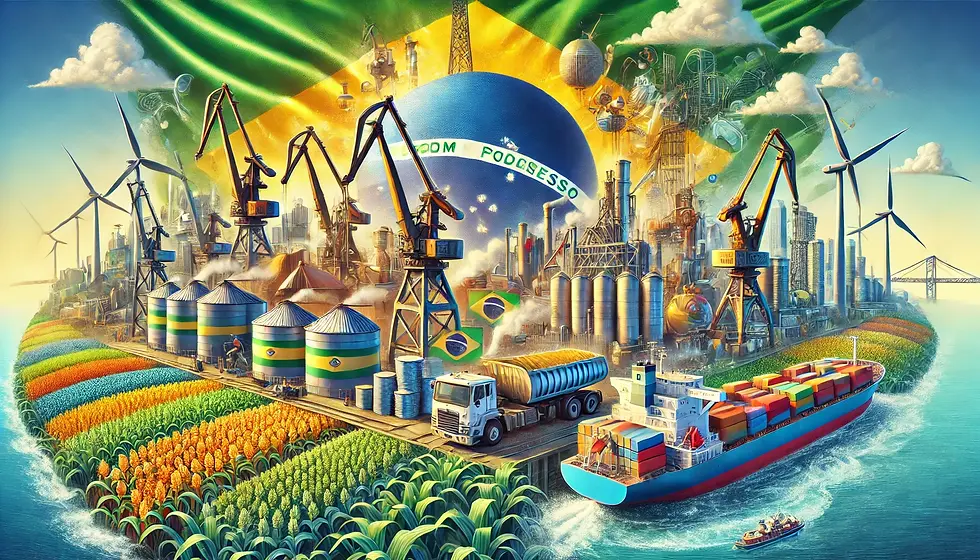Untitled
- Linafer Trade Commodities

- 9 de dez. de 2024
- 2 min de leitura
Brazil's Exports at the End of 2024: Retrospective and Outlook
As 2024 comes to a close, Brazil's exports showcase a resilient panorama, bolstered by the agribusiness, mining, and energy sectors. Despite global challenges, Brazil maintains its prominent position in international trade, seizing strategic opportunities to expand its presence in key markets.
Agribusiness on the Rise: The Backbone of Exports
The agricultural sector continues to lead Brazil’s exports, with soybeans, corn, meat, and coffee among the top products. Estimates from the Confederation of Agriculture and Livestock of Brazil (CNA) indicate that agribusiness will close the year accounting for about 50% of total exports.
Corn: Brazil consolidated its leadership as the world's largest corn exporter in 2024. Sales to China, Egypt, and the European Union were boosted by record harvests and competitive prices.
Beef and Chicken: Meat exports continue to grow, especially to Asian markets such as China, Vietnam, and Indonesia. Brazilian proteins remain renowned for their quality and compliance with strict sanitary requirements.
Soybeans: Despite competition from the United States, Brazil is expected to close the year with exports exceeding 100 million tons, securing its prominent position in the global market.
Mining and Energy: Impact on Foreign Trade
The export of mineral and energy commodities also played a crucial role. Iron ore and crude oil led the sector, driven by Chinese demand and high prices in the international market.
Iron Ore: Exports grew by about 5% compared to the previous year, with China remaining the main buyer.
Oil: Crude oil shipments continue to rise, with Brazil reaching new agreements in the Middle East and Asia.
Challenges and Future Trends
Despite the positive performance, Brazil faces challenges that require attention:
1. Infrastructure: Investments in logistics are crucial to enhance competitiveness, particularly in ports and railways.
2. Sustainability: Environmental demands from markets like the European Union pressure Brazil to adopt more sustainable practices.
3. Market Diversification: Expanding presence in emerging markets can help mitigate risks associated with dependence on a few buyers, such as China.
Outlook for 2025
With the continuation of global economic recovery, Brazil is expected to maintain strong performance in 2025. Growth in sectors such as biofuels and renewable energy, combined with technological advancements in agribusiness, promises to open new opportunities for foreign trade.

Thus, Brazil ends 2024 with impressive figures and the expectation of another year of expansion, remaining one of the global leaders in the supply of food, energy, and minerals.



Comments